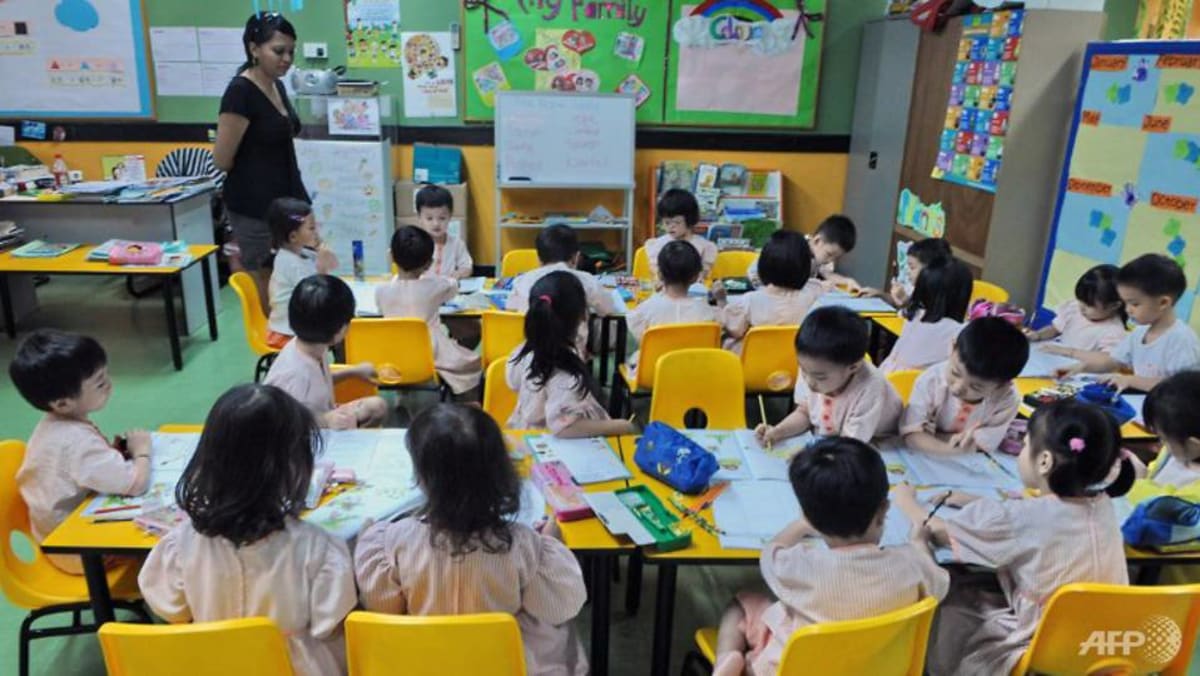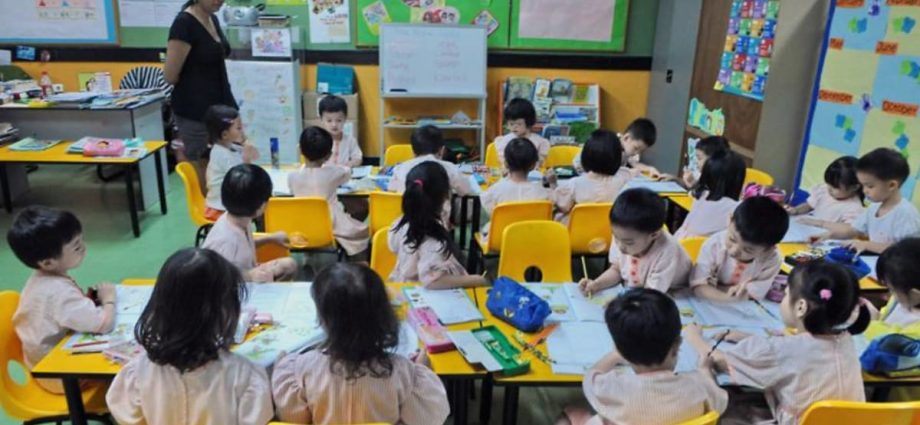
TIGHT ON TIME AND LABOUR
Preschool teachers described the toll taken by the long hours and heavy workload that includes not just lessons, but unseen preparation and administrative work.
Star Learners’ Ms Chen said the demand for early childhood educators “significantly surpasses” the available supply of qualified applicants.
The school’s centres are adequately staffed, but “short-term staffing gaps” appear from time to time, she said. These are filled by relief teachers. The school also offers internships and practicums, and participates in career conversion programmes.
The retired preschool teacher said that the staffing situation has already improved from the past, recalling that 10 years ago, the ratio was two teachers to almost 30 nursery students.
But others may still find the situation untenable.
The former MindChamps teacher left in 2020 after three years on the job, when the stress started spilling over into her personal life and she found herself getting “very irritable, exhausted and sick most of the time”.
“Preschool teachers are overworked, lowly paid and put under so much pressure,” said the former teacher, who has left the sector entirely.
“Everyone joins the industry with love and patience, but it really gets tested throughout. I think it’s not something that the ordinary public will understand.”
On top of daily routines for the children – such as having lessons, meals, showers and naps within the stipulated timetable – teachers also have to manage and update parents, meet key performance indicators, write class reports, plan the curriculum and do lesson plans, among other duties.
“It’s a never-ending list of administrative things we need to do, but yet somehow cannot do it during our work hours because we need to be with the class all the time,” she said. At her school, teachers were not allowed to use laptops or phones when in class with the students.
For the E-Bridge teacher, her day is supposed to start at 7am and end at 4.30pm, with a one-hour lunch break.
In reality, lunch is scarfed down in 10 minutes, with the rest of the time used to do administrative work. After classes end, she continues to work at home.
She hopes that ECDA will consider lowering the staff-to-children ratio from 1:8 to 1:5 for children up to two years old. The 1:5 ratio is currently in place for infants aged up to 18 months.
“If the teachers are very stressed and anxious in class, it’s not going to do anything good for the children,” she said, while acknowledging that lowering the ratio will add to hiring demand in the sector.
ECDA said it recognises that many educators join the sector with a passion to nurture young children and work hard to make a positive impact in their lives.
“ECDA has put in place measures to improve working conditions of early childhood educators and will continue to do so … We urge parents to continue supporting our educators, as they work tirelessly in caring and supporting our children,” said the spokesperson.

